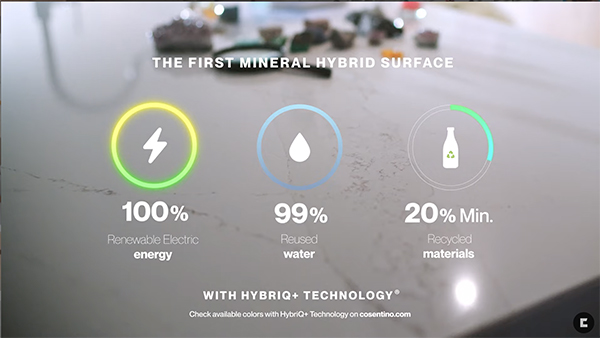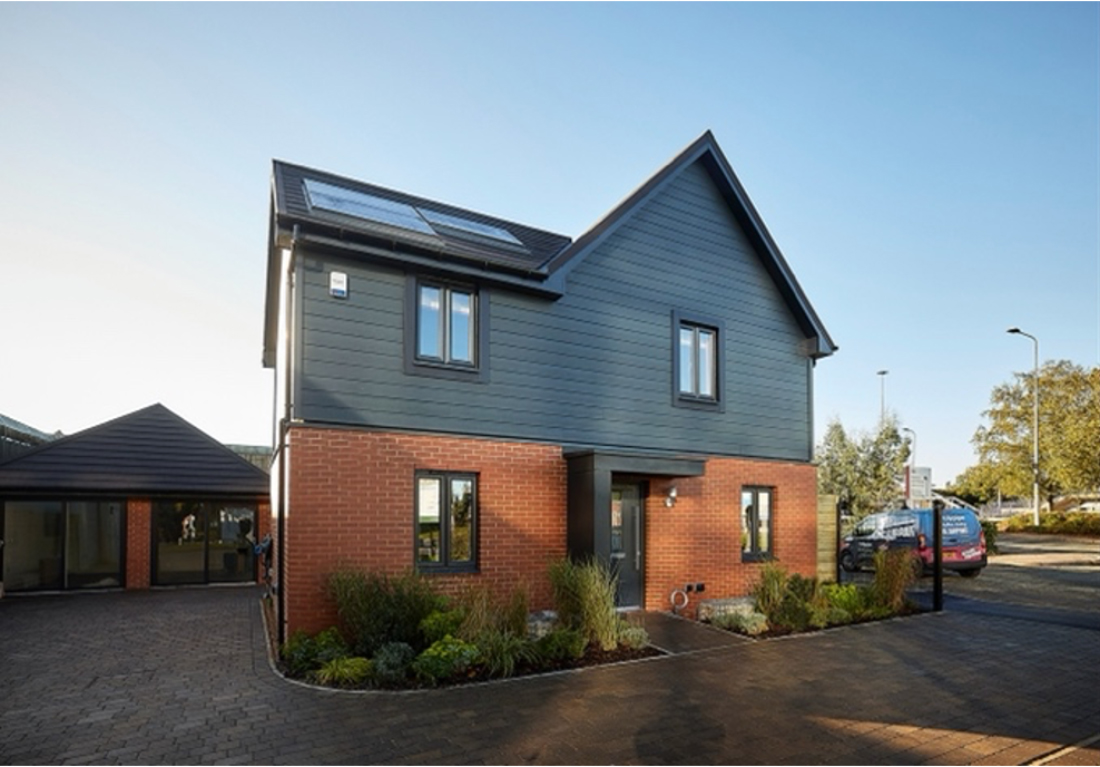Silestone launches social media sustainability campaign as the material is chosen for Barratt zero carbon home
Z House from Barratt Developments claims to be the first zero carbon house by a major builder to substantially surpass the Future Homes Standard. And one of the materials it incorporates is Cosentino’s Silestone quartz (although Cosentino prefers to call Silestone a ‘hybrid mineral surface’).
At the same time, Cosentino has launched a social media campaign in 21 countries, including the UK and Ireland, to emphasise the sustainability of Silestone with its HybriQ+ formulation, which has replaced some of the quartz with pre-consumer recycled glass.
Last year Barratt announced all its new homes will be zero carbon by 2030, and to help it achieve this goal it is using Cosentino’s Silestone Cincel Grey surface, which claims to be carbon neutral thanks partly to offsetting, in the kitchen of the Z House.
The Z House has been built with more than 40 industry partners on the main campus at the University of Salford, Manchester, to showcase the future of sustainable living.
It surpasses the Future Homes Standard by delivering a carbon reduction of 125% measured against 2013 ADL1a, but using Future Homes metrics and targets. It will be occupied and monitored to assess its performance over time.
It is an industry showcase home to demonstrate what is achievable by a mainstream, volume housebuilder.
Meanwhile, Cosentino’s Silestone social media campaign was launched this month (June) to get the sustainability message out to a wider audience.
The company describes the campaign, called Changing The World From The Kitchen, as its most relevant in recent years.
Emphasising Silestone’s sustainability, the campaign presents the vision that big (and small) sustainable choices can originate from the kitchen, so everyone can make small changes that, together, have a big impact.
Damián Granados, VP Global Marketing of Cosentino Group, says: “This commitment to sustainability allows us to send a message of transformation to our clients, collaborators, specifiers and, of course, to end users. A change to build the world we want, to provide solutions to the future issues, and that has its epicentre in the kitchen space.”


